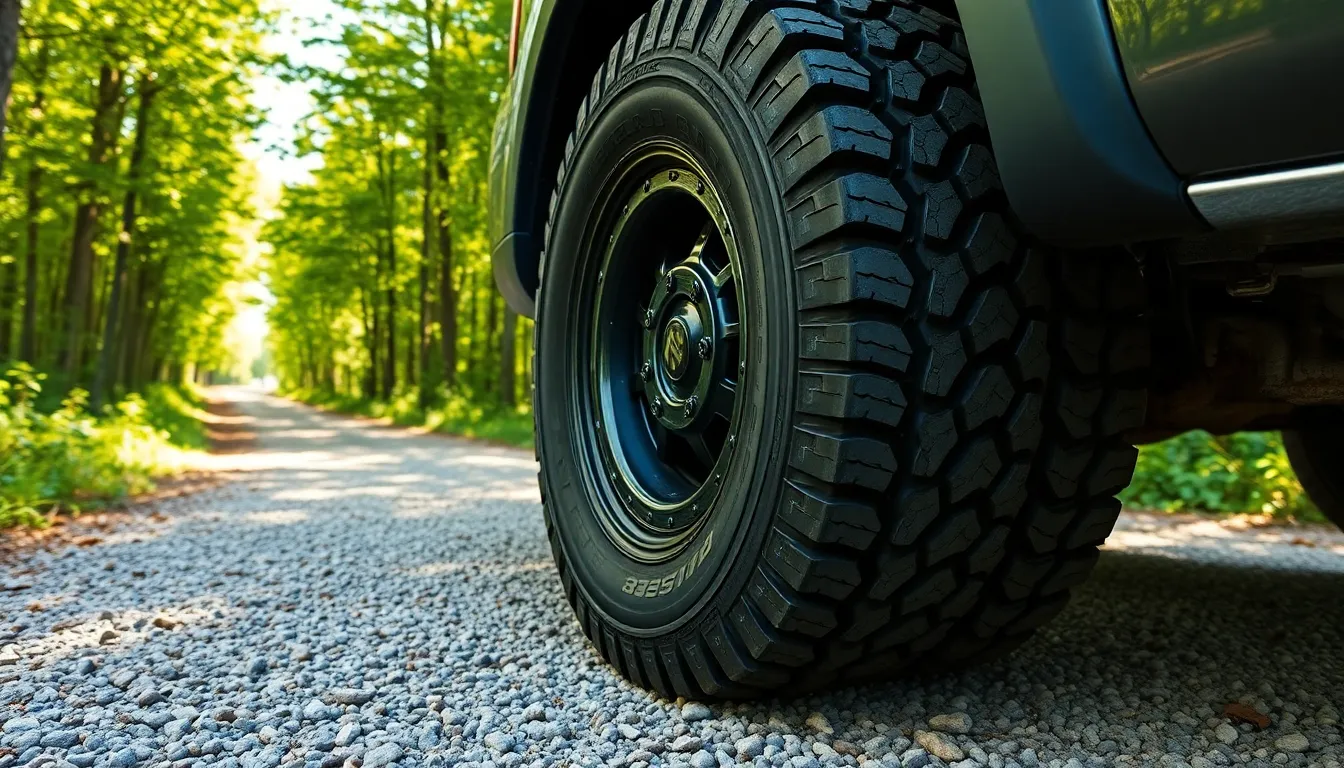When we’re shopping for new tires or trying to understand our vehicle’s specifications, tire size numbers can feel like a confusing code. If you’ve encountered “285” on a tire sidewall or in your owner’s manual, you’re probably wondering exactly what this measurement means and how it affects your driving experience.
The number 285 represents the tire’s width in millimeters, but there’s much more to the story. Understanding this measurement helps us make informed decisions about tire performance, fuel efficiency, and vehicle handling. Whether you’re upgrading your truck’s tires or simply trying to replace what’s currently on your wheels, knowing what 285 means is crucial.
We’ll break down everything you need to know about 285 tire sizing, from how it compares to other common sizes to what vehicles typically use this measurement. This knowledge will empower you to choose the right tires for your exact needs and driving conditions.
Understanding 285 Tire Size Designations
Breaking down the 285 tire designation reveals a systematic approach to tire measurements that follows industry standards. The number 285 represents the tire’s section width measured in millimeters from sidewall to sidewall when mounted on a specified rim width.
Components of the Complete Tire Size Code
285 tires feature additional designations that complete the sizing information beyond just the width measurement. A typical 285 tire displays markings like 285/75R16 or 285/70R17 on the sidewall.
The aspect ratio follows the width number and indicates the tire’s sidewall height as a percentage of its width. Common aspect ratios for 285 tires include:
- 75 ratio creates a sidewall height of 213.75mm
- 70 ratio produces a sidewall height of 199.5mm
- 65 ratio results in a sidewall height of 185.25mm
- 60 ratio generates a sidewall height of 171mm
Construction type appears after the aspect ratio using letters like R for radial or D for diagonal bias ply. Radial construction dominates modern tire manufacturing and provides better performance characteristics than bias ply alternatives.
Rim diameter measurements conclude the size designation and specify the wheel size in inches. Popular rim diameters for 285 tires range from 15 inches to 22 inches depending on vehicle applications.
Load Index and Speed Rating Integration
Load index numbers accompany 285 tire sizes and indicate maximum weight capacity per tire. These numerical codes range from 109 to 126 for most 285 applications.
| Load Index | Weight Capacity (lbs) | Common Applications |
|---|---|---|
| 109 | 2,271 | Light trucks |
| 113 | 2,535 | SUVs |
| 116 | 2,756 | Heavy duty trucks |
| 121 | 3,197 | Commercial vehicles |
Speed ratings use letter codes that specify maximum sustained speeds under proper conditions. 285 tires commonly feature S (112 mph), T (118 mph), H (130 mph), or V (149 mph) ratings based on intended usage.
Metric vs Imperial Measurement Context
285mm width translates to approximately 11.22 inches when converted to imperial measurements. This conversion helps drivers familiar with inch based sizing systems understand the physical dimensions.
Sidewall markings sometimes include equivalent inch designations like 33×12.50R15 alongside metric 285 specifications. These dual markings assist consumers transitioning between measurement systems and provide reference points for tire comparisons.
Decoding the 285 Tire Size Numbers
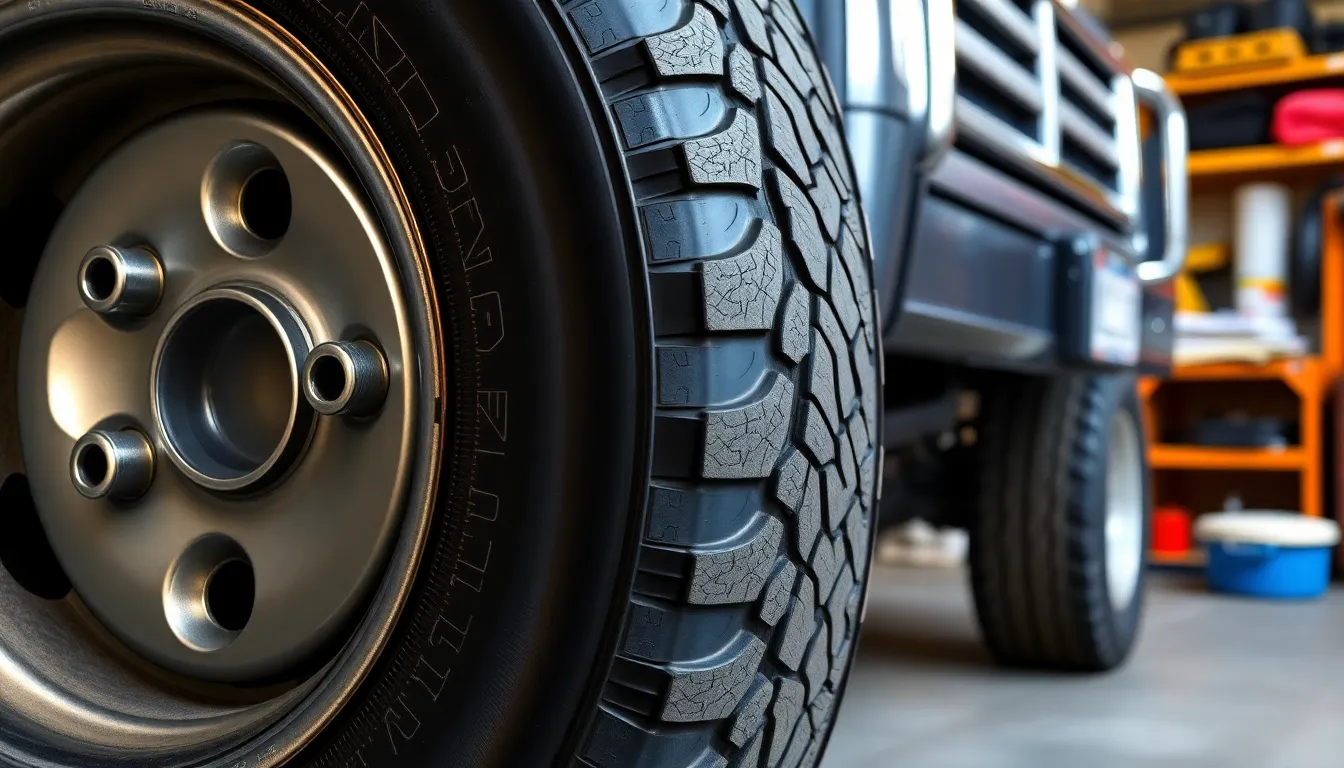
Understanding tire size numbers becomes straightforward when we break down each component systematically. The 285 designation represents just one element of a comprehensive sizing system that provides essential information about tire dimensions and compatibility.
Width Measurement in Millimeters
285 indicates the tire width measurement in millimeters from sidewall to sidewall. This dimension represents how wide the tire measures when mounted on a specified rim width under proper inflation conditions. Converting to imperial measurements, 285mm equals approximately 11.2 inches, making it easier for those familiar with standard measurements to visualize the tire’s substantial width.
Manufacturers use millimeter measurements as the international standard for tire width specifications. The 285 width classification places these tires in the larger category, commonly found on trucks, SUVs, and performance vehicles requiring enhanced road contact and stability.
Aspect Ratio and Sidewall Height
Aspect ratio appears as the second number in tire sizing and represents the sidewall height as a percentage of the tire width. A 285/70R17 tire features a 70% aspect ratio, meaning the sidewall height measures 70% of the 285mm width. This calculation produces a sidewall height of approximately 199.5mm or 7.85 inches.
Higher aspect ratios like 70% create taller sidewalls that typically provide smoother rides and better shock absorption. Lower aspect ratios result in shorter sidewalls that offer improved handling response and cornering stability but may transmit more road noise and impact harshness to the vehicle.
Rim Diameter Specifications
Rim diameter specifications appear as the final number in tire sizing after the construction type indicator. The “R” designates radial construction, while the number indicates wheel diameter in inches that the tire fits. A 285/70R17 tire mounts on 17-inch diameter wheels, measuring 431.8mm in the metric system.
| Specification | Imperial Measurement | Metric Measurement |
|---|---|---|
| Tire Width | 11.2 inches | 285 mm |
| Sidewall Height (70% ratio) | 7.85 inches | 199.5 mm |
| Rim Diameter | 17 inches | 431.8 mm |
Wheel diameter compatibility ensures proper mounting and optimal performance characteristics. Larger rim diameters often accommodate bigger brake systems while potentially affecting ride comfort due to reduced sidewall flex.
Common 285 Tire Size Variations
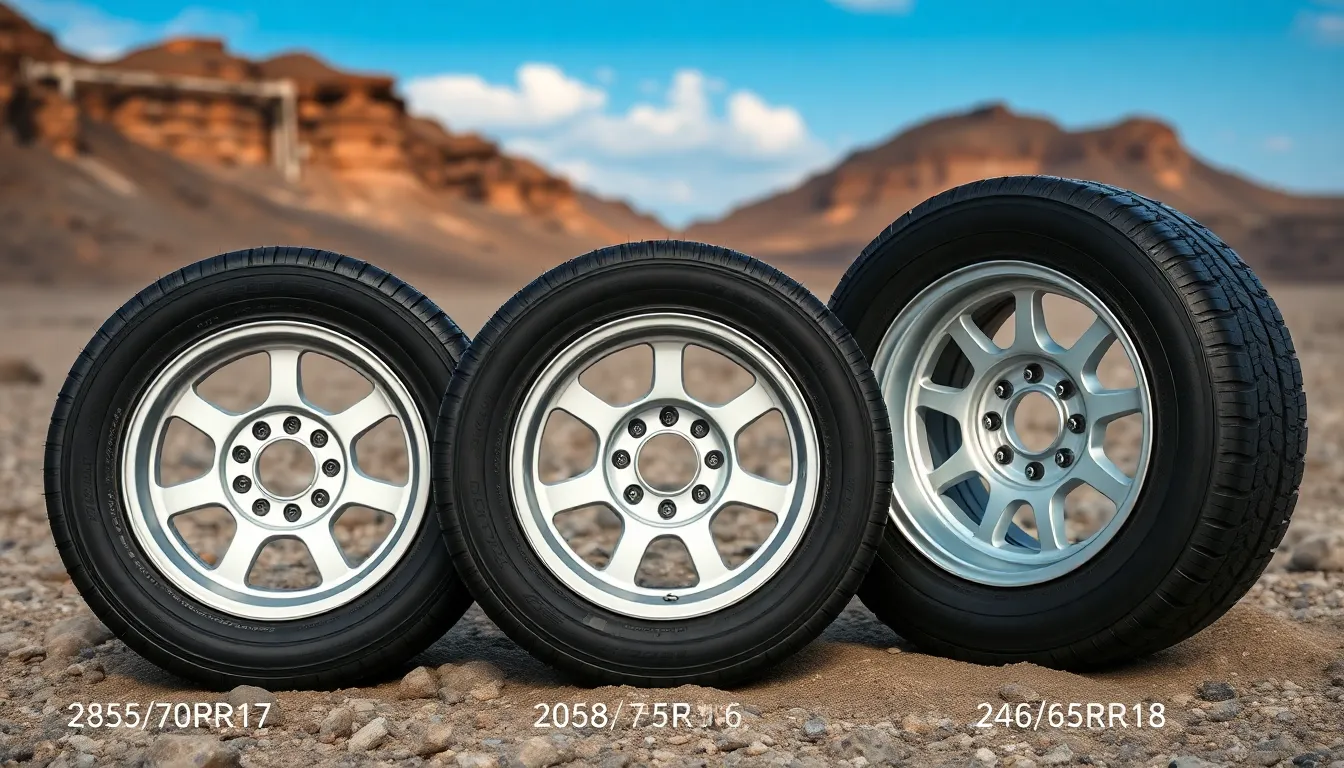
The 285 tire width appears across multiple size configurations that serve different vehicle applications and performance requirements. Each variation combines the 285mm width with distinct aspect ratios and rim diameters to create unique overall dimensions.
285/70R17 Specifications
285/70R17 tires measure 285mm (11.2 inches) in width with a 70% aspect ratio that creates approximately 7.9 inches (200mm) of sidewall height. The overall diameter reaches 32.8 inches (832mm) with a circumference of approximately 103 inches (2612.5mm). These radial construction tires mount on 17-inch (431.8mm) diameter wheels and provide balanced performance characteristics for trucks and SUVs. Load carrying capacity and ground clearance make this size popular among off-road enthusiasts and commercial vehicle operators.
285/75R16 Specifications
285/75R16 configurations feature the same 285mm width but incorporate a higher 75% aspect ratio that increases sidewall height compared to the 70 series. The 16-inch wheel diameter creates a larger overall tire diameter than the 285/70R17 even though the smaller rim size. Increased sidewall flex provides enhanced ride comfort and improved traction in loose terrain conditions. Commercial applications and heavy-duty trucks frequently use this size for its load carrying capabilities and durability characteristics.
285/65R18 Specifications
285/65R18 tires combine the 285mm width with a lower 65% aspect ratio that reduces sidewall height relative to other 285 variations. The 18-inch wheel diameter creates a shorter overall diameter compared to 285/70R17 configurations even though the larger rim size. Reduced sidewall flex enhances steering response and cornering stability for performance-oriented applications. Modern pickup trucks and performance SUVs often specify this size to balance comfort with handling precision.
Vehicle Applications for 285 Tires
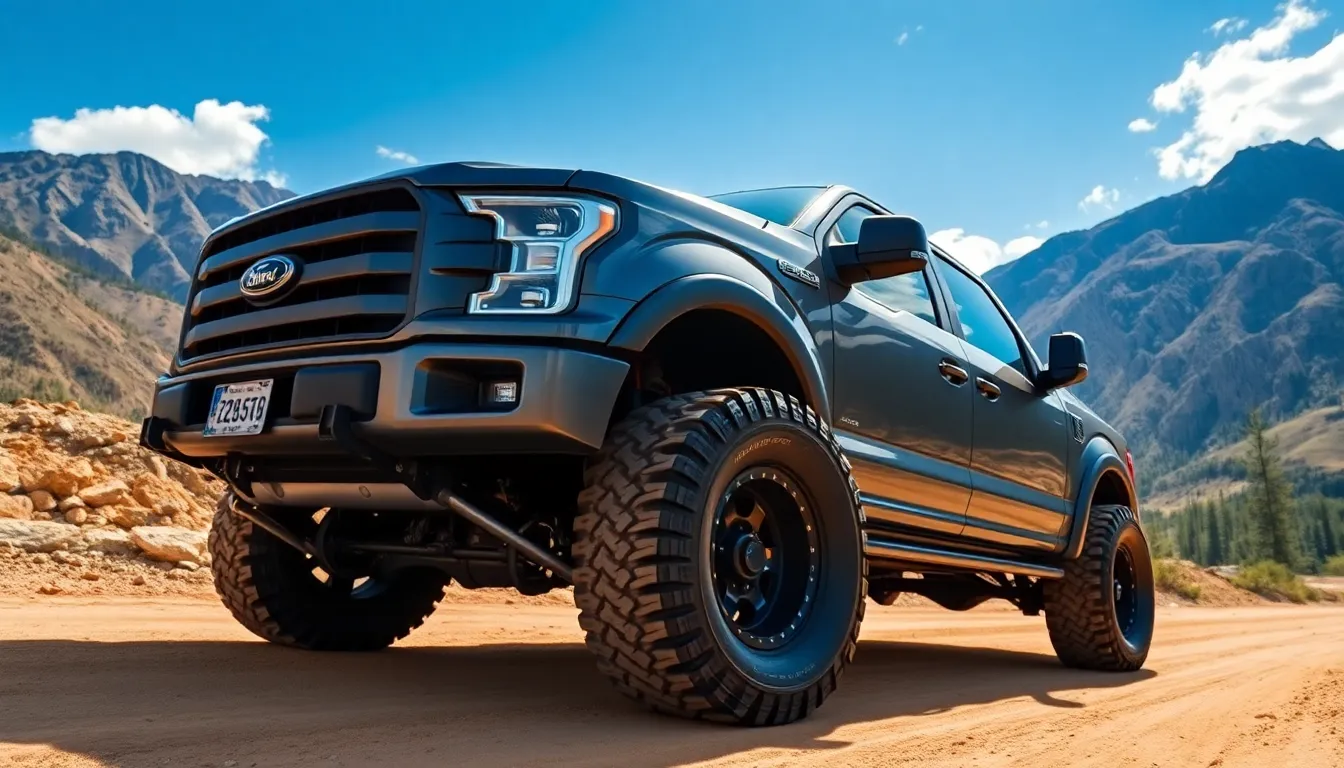
285-width tires serve diverse automotive applications where enhanced traction, stability, and load capacity are essential. These tires excel in demanding environments and heavy-duty applications.
Trucks and SUVs
Trucks and SUVs commonly use 285-width tires due to their improved traction characteristics and enhanced load-carrying capabilities. The wider 285mm footprint provides better stability during highway driving and cornering maneuvers compared to narrower tire options.
Commercial pickup trucks benefit from the increased contact patch that 285 tires provide, which distributes vehicle weight more effectively across the road surface. Full-size SUVs equipped with 285 tires experience improved braking performance and enhanced steering response during loaded conditions.
The substantial width of 285 tires makes them particularly suitable for vehicles that regularly carry heavy payloads or tow trailers. Popular configurations like 285/70R17 and 285/75R16 offer optimal performance for trucks and SUVs operating in both urban and highway environments.
Off-Road and All-Terrain Vehicles
Off-road vehicles leverage the substantial surface area of 285 tires to achieve superior grip on loose or uneven terrain conditions. The wider footprint distributes vehicle weight more evenly, reducing ground pressure and preventing excessive sinking in sand, mud, or snow.
All-terrain vehicles equipped with 285 tires demonstrate enhanced traction during rock crawling, trail driving, and other challenging off-road scenarios. The increased tire width provides better lateral stability when handling steep inclines or traversing uneven surfaces.
Adventure vehicles and dedicated off-road rigs use 285 tires to maximize their capability across diverse terrain types. These tires offer improved flotation in soft surfaces while maintaining the structural integrity required for aggressive off-road use.
| Vehicle Type | Primary Benefits | Common Sizes |
|---|---|---|
| Pickup Trucks | Load capacity, stability | 285/70R17, 285/75R16 |
| Full-Size SUVs | Traction, handling | 285/65R18, 285/70R17 |
| Off-Road Vehicles | Terrain grip, flotation | 285/75R16, 285/70R17 |
Performance Characteristics of 285 Tires
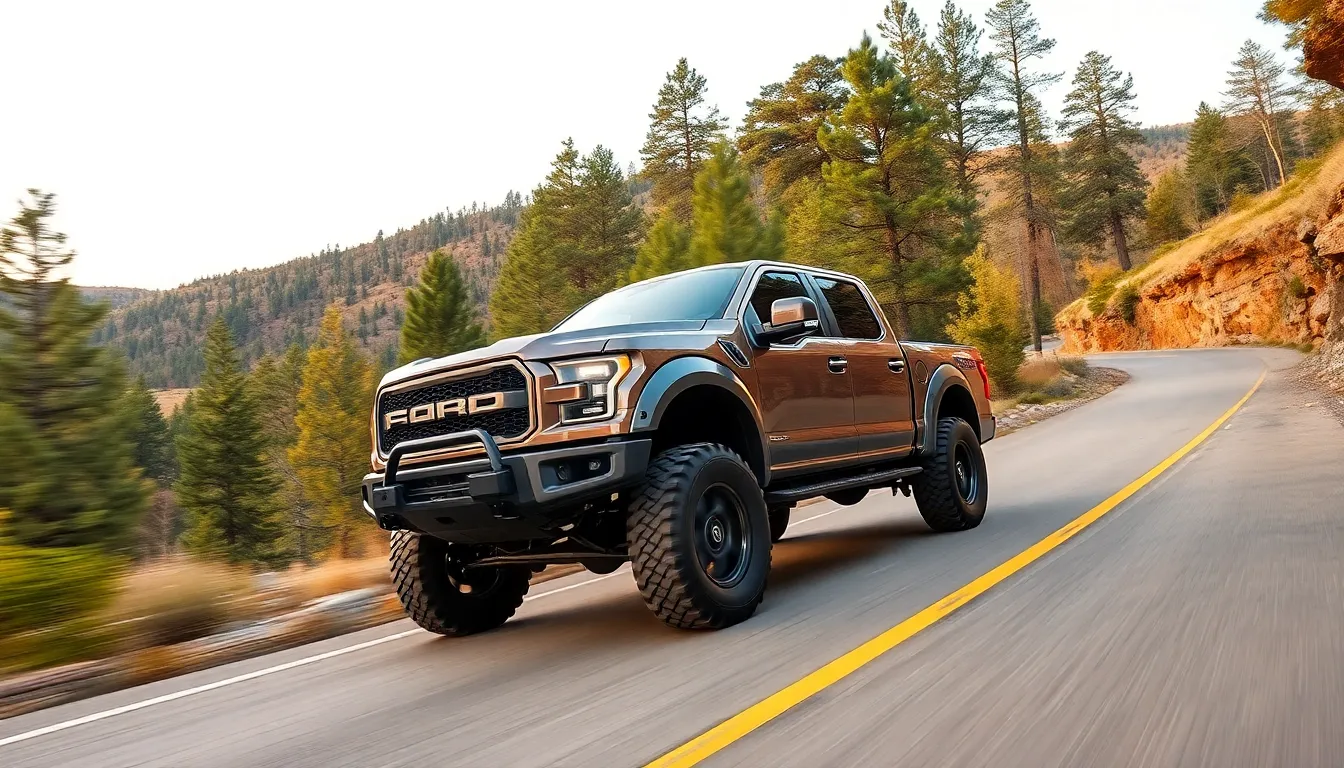
285 tires deliver distinct performance advantages that make them particularly effective for larger vehicles requiring enhanced capability. The wider 285mm profile creates exact handling and efficiency characteristics that directly impact driving experience.
Traction and Handling
Wider 285 tires provide a larger contact patch with the road surface compared to narrower alternatives. This expanded footprint translates to increased grip for acceleration, braking, and cornering maneuvers across various driving conditions.
Off-road traction benefits significantly from the 285mm width as the broader surface area distributes vehicle weight more evenly. Better weight distribution reduces ground pressure and enhances traction on loose surfaces like sand, gravel, and mud.
Handling stability improves notably on trucks and SUVs equipped with 285 tires during highway driving. The wider contact patch provides enhanced steering response and reduces lateral movement during lane changes or emergency maneuvers.
Cornering performance increases as the broader tire profile maintains better road contact throughout turns. Enhanced road contact reduces tire slip and provides drivers with improved confidence during spirited driving or when handling winding roads.
Fuel Economy Impact
Rolling resistance increases with wider 285 tires compared to narrower tire options. The expanded contact patch creates additional friction between the tire and road surface, requiring engines to work harder to maintain consistent speeds.
Fuel efficiency typically decreases by 2-4% when upgrading from standard width tires to 285mm alternatives. This reduction occurs because broader tires generate more resistance that the engine must overcome during acceleration and cruising.
Tire construction and tread pattern design also influence overall fuel consumption beyond width considerations. Premium 285 tires with optimized compounds and aerodynamic tread designs can minimize fuel economy penalties while maintaining performance benefits.
Highway driving shows the most noticeable fuel consumption differences as consistent speeds amplify rolling resistance effects. City driving patterns with frequent stops and starts tend to minimize the fuel economy impact of wider 285 tires.
Comparing 285 Tires to Other Popular Sizes

We’ve analyzed the dimensional differences between 285 tires and other commonly used sizes to help you understand their relative performance characteristics. The data reveals important variations in diameter, width, and overall footprint that directly impact vehicle handling and capability.
| Tire Size | Diameter (Inches) | Width (Inches) | Wheel Diameter (Inches) |
|---|---|---|---|
| 285/70R18 | 33.7 | 11.2 | 18 |
| 285/75R18 | 34.8 | 11.2 | 18 |
| 265/70R17 | 32.6 | 10.4 | 17 |
285/70R18 versus 265/70R17 showcases the substantial size difference between these popular configurations. The 285/70R18 measures 33.7 inches in diameter compared to the 265/70R17’s 32.6 inches, creating a 1.1-inch increase in overall height. Width comparison shows the 285 tire at 11.2 inches versus the 265’s 10.4 inches, providing 0.8 inches of additional contact surface.
285/75R18 compared to 285/70R18 demonstrates how aspect ratio changes affect overall dimensions. Both tires share the same 11.2-inch width, but the 285/75R18 reaches 34.8 inches in diameter due to its taller sidewall construction. This 1.1-inch diameter increase results from the higher 75% aspect ratio creating more sidewall height than the 70% configuration.
Contact patch differences between these sizes impact traction and handling characteristics significantly. The 285 width provides approximately 6% more ground contact area than 265 width tires, improving grip during acceleration, braking, and cornering maneuvers. Larger diameter tires like the 285/75R18 offer improved ground clearance but may affect speedometer accuracy and fuel consumption.
Performance implications vary based on your vehicle’s intended use and driving conditions. The 285/70R18 balances capability with fuel efficiency for mixed driving scenarios, while the 285/75R18 maximizes off-road performance and load capacity. Smaller 265/70R17 tires typically deliver better fuel economy and smoother highway ride quality but sacrifice some traction and load-bearing capability.
Installation and Compatibility Considerations
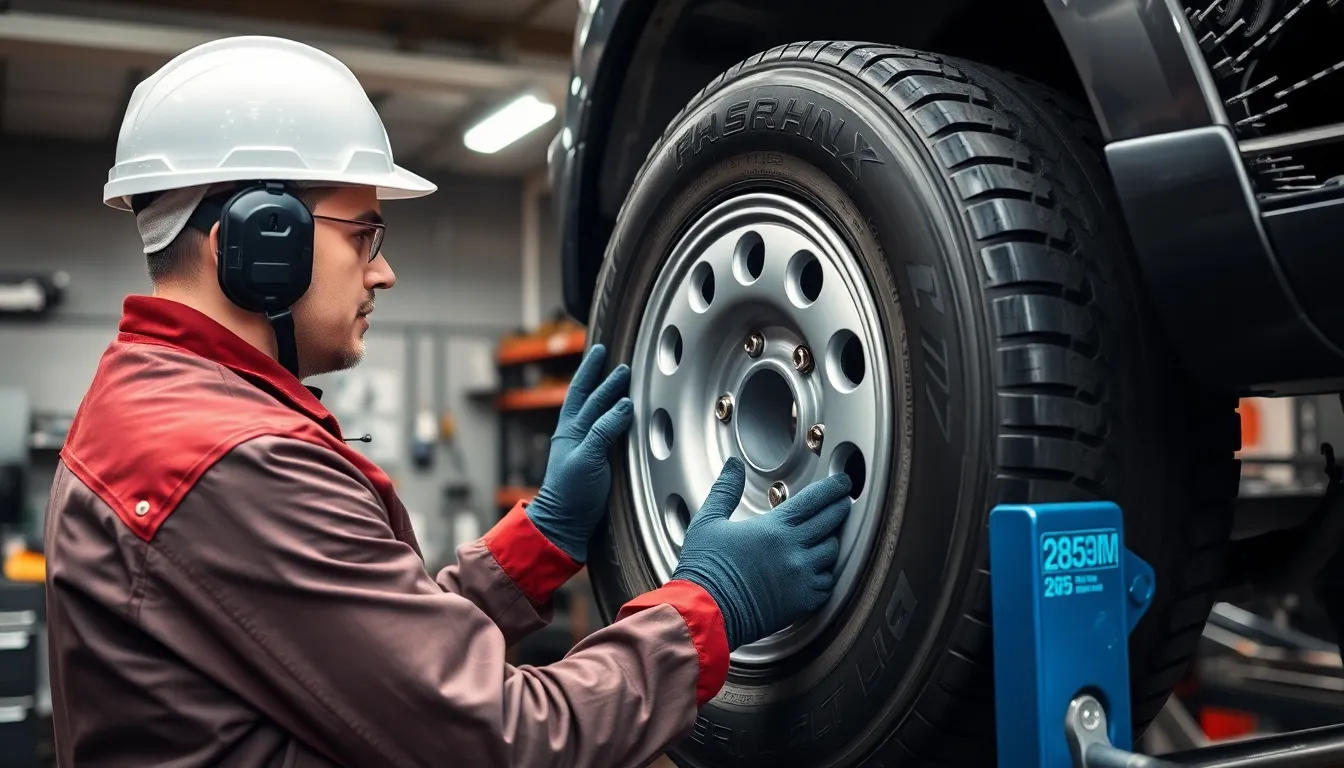
Installing 285 tires requires careful attention to several critical factors that ensure safe operation and optimal performance. The physical clearance between the tire and vehicle components represents the most important compatibility consideration we must evaluate before installation.
Wheel Rim Compatibility Requirements
A 285mm wide tire typically requires rim widths ranging from 7.5 to 9.5 inches depending on manufacturer specifications. The exact rim width affects tire profile and performance characteristics significantly. Mounting a 285 tire on an incompatible rim width can compromise handling and create safety hazards.
Physical Clearance Verification
The vehicle’s body and suspension system must accommodate the 285mm tire width without interference. We check clearance at wheel arches, fenders, and suspension components during full steering lock and under load conditions. The overall diameter measurement of 32.8 inches for a 285/70R17 tire requires adequate clearance above the tire to prevent contact with wheel wells.
| Clearance Check Points | Minimum Requirements |
|---|---|
| Wheel arch clearance | 1-2 inches minimum |
| Fender clearance | 0.5-1 inch minimum |
| Suspension clearance | 1 inch minimum |
| Full lock clearance | No contact |
Load Rating and Speed Index Verification
Each 285 tire displays load index numbers indicating maximum weight capacity per tire. The speed rating specifies the maximum sustained speed capability for safe operation. These specifications must meet or exceed the vehicle manufacturer’s original equipment requirements to maintain safety standards.
Professional Installation Guidelines
Professional installation ensures proper mounting, balancing, and alignment of 285 tires. Technicians verify tire pressure according to manufacturer specifications, which typically ranges from 35-80 PSI depending on vehicle application. Alignment adjustments often become necessary when upgrading to wider 285 tires from narrower factory sizes.
The installation process includes torque verification for wheel bolts and comprehensive safety inspections. We recommend professional installation particularly for vehicles requiring suspension modifications to accommodate the wider 285 tire profile.
Conclusion
Understanding 285 tire sizing empowers us to make better decisions for our vehicles’ performance and safety. We’ve explored how this 285mm width designation impacts everything from fuel economy to off-road capability.
Whether we’re upgrading our truck for heavy-duty work or improving our SUV’s traction we now know that 285 tires offer distinct advantages for larger vehicles. The key lies in matching the right tire configuration to our exact driving needs.
Professional installation remains crucial for optimal performance and safety. By considering clearance requirements load ratings and compatibility factors we can maximize the benefits these wider tires provide while ensuring reliable operation across all driving conditions.
Frequently Asked Questions
What does the number 285 mean on a tire?
The number 285 indicates the tire’s width in millimeters, measuring from sidewall to sidewall. This measurement is taken when the tire is mounted on a specified rim width. A 285mm tire translates to approximately 11.22 inches in width, making it suitable for larger vehicles like trucks and SUVs that require enhanced traction and stability.
What vehicles typically use 285 tires?
285 tires are primarily used on trucks, SUVs, and off-road vehicles that require enhanced traction, stability, and load capacity. These wider tires excel in demanding environments and are ideal for vehicles that regularly carry heavy payloads, tow trailers, or navigate challenging off-road terrain where superior grip and stability are essential.
How do 285 tires affect fuel economy?
285 tires typically decrease fuel efficiency by 2-4% compared to standard width tires due to increased rolling resistance. The wider profile creates a larger contact patch with the road, which enhances traction and handling but requires more energy to maintain movement, resulting in higher fuel consumption.
What are common 285 tire size variations?
Popular 285 tire variations include 285/70R17 for balanced truck and SUV performance, 285/75R16 for enhanced ride comfort and heavy-duty applications, and 285/65R18 for performance-oriented designs. Each combines the 285mm width with different aspect ratios and rim diameters to meet specific vehicle requirements and performance needs.
What rim width is required for 285 tires?
285mm tires typically require rim widths ranging from 7.5 to 9.5 inches for proper mounting and optimal performance. The specific rim width depends on the complete tire size designation and vehicle manufacturer specifications. Professional installation is recommended to ensure proper fitment and safety compliance.
Do 285 tires require special clearance considerations?
Yes, 285 tires require careful clearance evaluation due to their wider profile. Minimum clearance requirements include 1-2 inches at wheel arches and 0.5-1 inch at fenders. Installation may require checking suspension components and potentially making modifications to accommodate the increased width safely.
How do 285 tires compare to 265 tires in performance?
285 tires offer superior traction and handling compared to 265 tires due to their wider contact patch, making them better for off-road and heavy-duty applications. However, 265 tires typically provide better fuel economy and smoother rides. The choice depends on your vehicle’s intended use and driving conditions.
What does the aspect ratio mean on 285 tires?
The aspect ratio represents the sidewall height as a percentage of the tire width. For example, a 285/70R17 tire has a 70% aspect ratio, meaning the sidewall height is 70% of 285mm, approximately 7.85 inches. This affects overall tire diameter, ride comfort, and handling characteristics.

